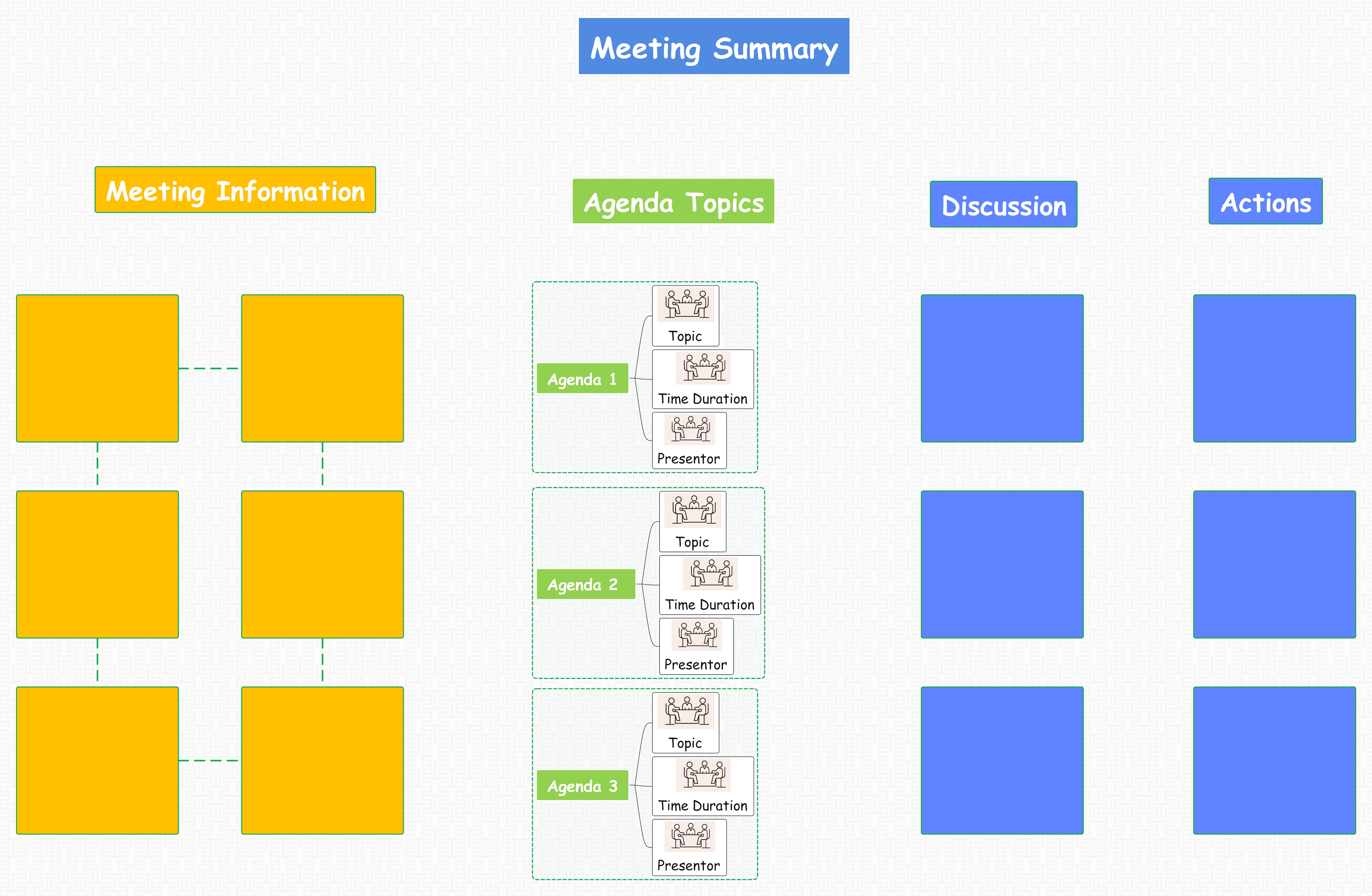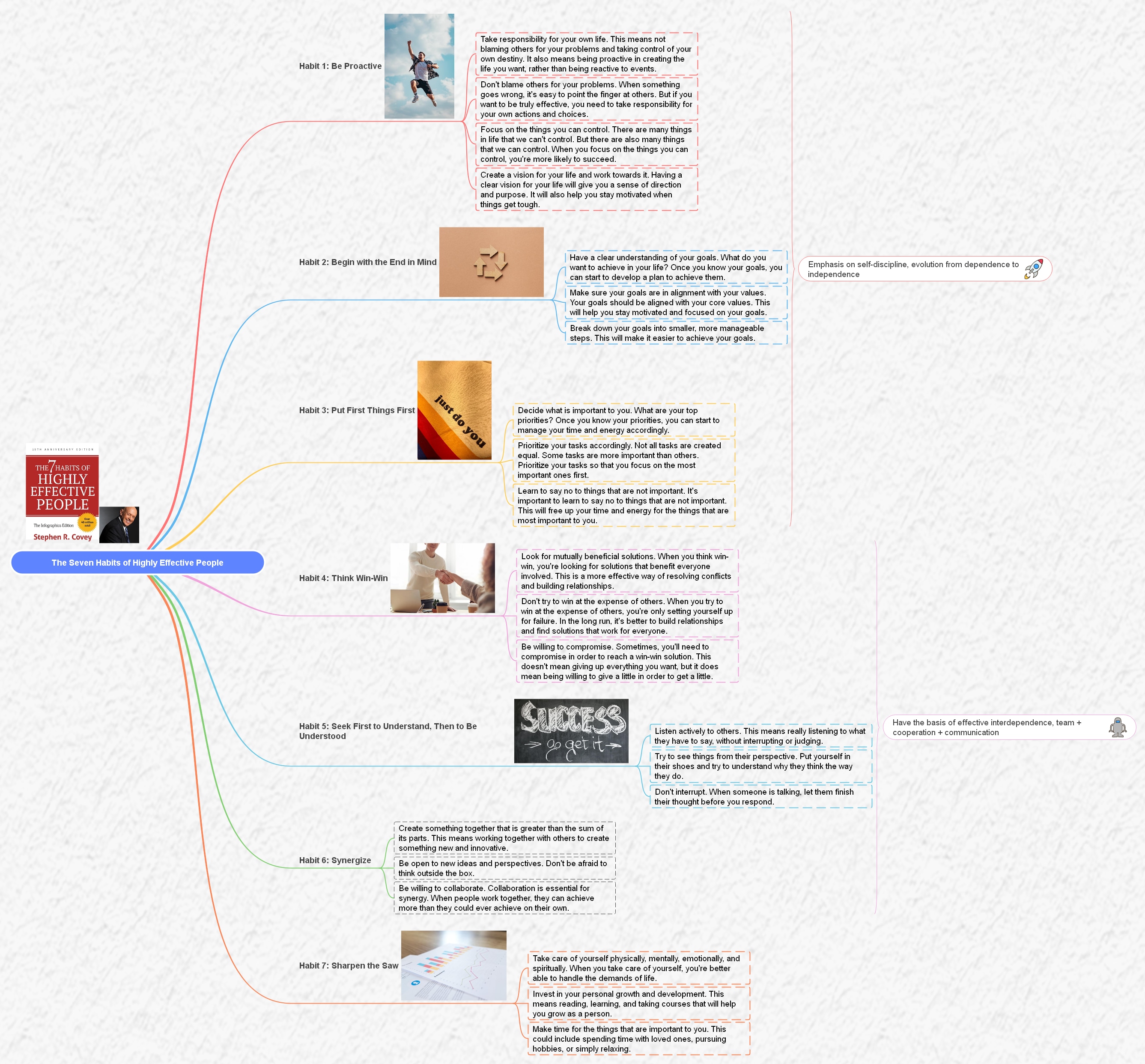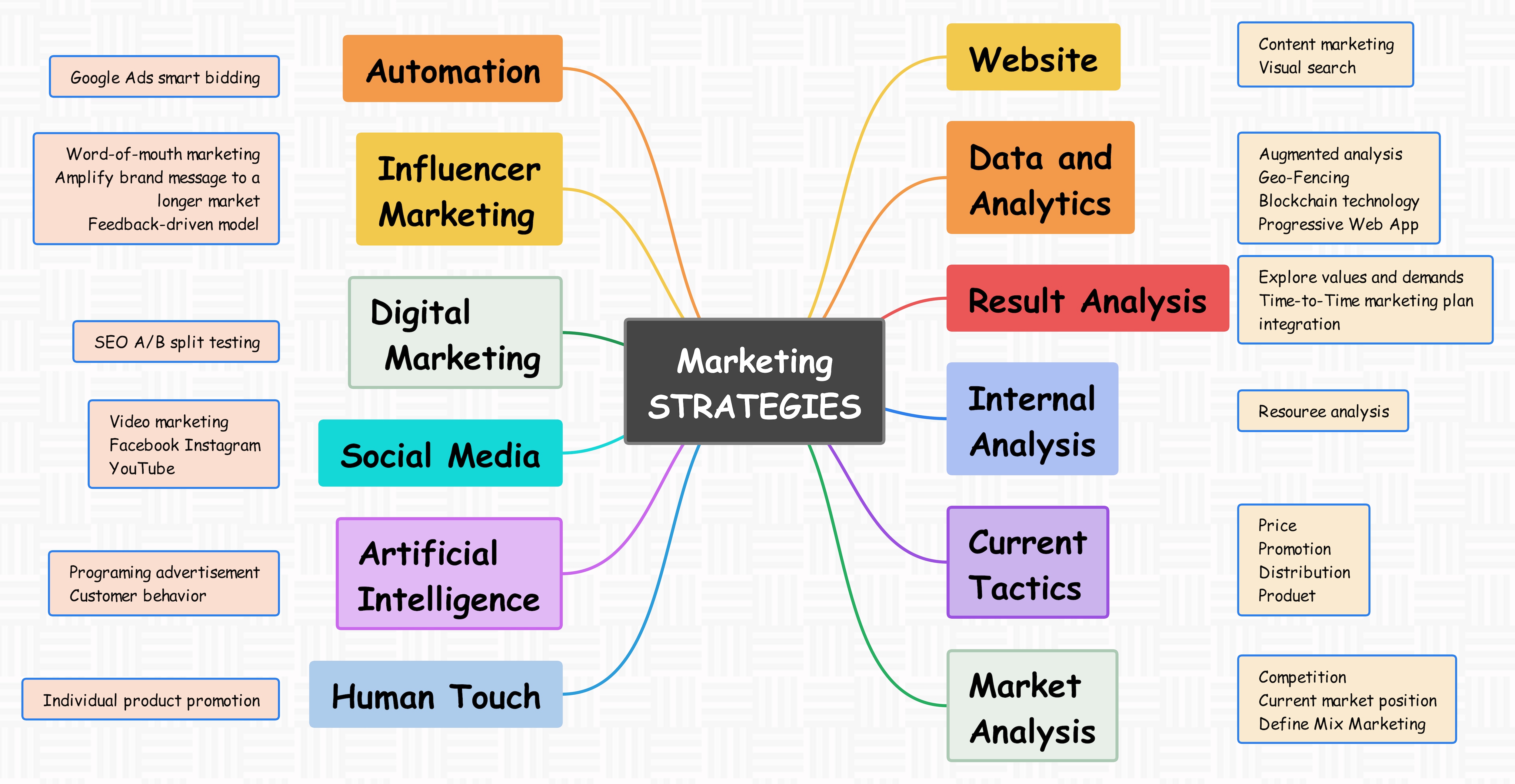Every small and big business requires proper planning to execute their ideas, ensuring constant success and profitability. Some companies conduct quarterly analyses to evaluate their performances, while others create business mind maps that represent their core ideas, strategies, and goals -- all in one place.

A mind map is a diagramming technique used by students and professionals to represent tasks, items, activities, and concepts around a central theme or subject using a non-linear method. When business professionals create mind maps for their different tasks, they have a visualizing medium that provides them with a better brainstorming ground and ensures that they do not miss out on important topics. In this article, we will introduce several business mind map examples and templates that a firm or an organization can use to achieve the maximum output. In addition to introducing several business mind map templates, we will help you out in creating mind maps for your business-related purposes using the templates and themes provided by EdrawMind.
Before we check business mind map templates and examples, let us see how mind maps actually came into effect.
Mind Map was first introduced by Tony Buzan in 1974 when he needed a tool to have better brainstorming sessions with his team members. However, not many know this for a fact that the very first evidence of a mind map was created by Porphyry -- a Roman philosopher who created a mind map of Earth in the late 300AD. Since Porphyry's work came to light, many authors, business personnel, researchers, and more have used mind maps to show information in visual formation.
In this article
What is a Mind Map for Business?
Mind mapping is a powerful business tool that provides a universal key to unlocking the potential of any organization's services and products. With the help of a mind map, one can elevate the performance of their business model and even strive toward innovation. Some of the importance of using a mind map for businesses are:
- By creating a mind map, an organization can easily and effectively refine and elaborate different business ideas.
- With the help of a mind map, a firm can easily organize different procedures.
- With mind mapping, assembling and organizing different licenses and contracts is effective and easy.
- By creating a mind map, an organization ensures that they have a draft outline ready for the whole business operation.
- If you are a new startup or an entrepreneur, you will realize that mind maps help you to separate different topics into specific tasks so you can allocate appropriate time to them.
- Mind maps help businesses to generate new ideas.
- With the help of a mind map, a business organization can conduct multiple rounds of research to identify and capture new findings.
- When dealing with marketing planning, you will see that creating mind maps helps you develop different customer persons in detail.
- With mind mapping, an organization can communicate key benefits and usage of the services or products.
- When an organization creates a mind map for different scenarios, every team member can easily participate in the mind mapping process and share their valuable inputs.
Why Use a Business Mind Map?
For any company, small or large, business mind maps are more than just mind maps -- they are considered an indispensable tool that offers a wide range of benefits to understand the ins and outs. At the same time, a business mind map provides a way for the founders and business owners to understand how they operate their business and in which areas they need to work hard to improve their productivity.
Organizations and even small firms require business mind maps for different reasons, like:
- Improved Creativity: Like any generic mind maps, even business mind maps have this visual nature to encourage creative thinking amongst business owners and their employees. With the right associations and hierarchies, business mind maps help the teams explore unconventional thinking and break free from linear thinking of execution.
- Streamline Process: With a well-curated business mind map, organizations can concisely condense large volumes of data, similar to agile methodology. By streamlining the complex data, one can easily save resources.
- Efficient Planning: If you are developing a business strategy, project plan, or simply understanding a new marketing campaign, business mind maps can provide a structured approach that helps you visualize the key tasks, milestones, and dependencies.
- Problem Solving: Mind maps help break down problems into different management components. With business mind maps, it becomes easier to identify problems and develop alternate solutions faster.
Top 6 Examples of Business Mind Map
For individuals and business owners seeking ways to strive for strategic excellence, real-world examples of business mind maps come in handy. In order to understand the importance of business mind maps, we will discuss different mind map examples that shed light on how such mind maps are helpful for decision-making, problem-solving, and planning steps.
1. Mind Mapping for Meeting Management

Hundreds and thousands of team members get involved in office meetings every day! When you plan to have a meeting, a business mind map can be a game-changer. With the right mind map, you will enter the meeting with a clear objective, goals, and action items. Business mind maps for meeting management help the meeting organizer stay on track and ensure that each participant is engaged and every idea is heard. By using such detailed mind maps, businesses can easily reduce the time spent in unproductive meetings and ensure that each huddle serves a legitimate purpose.
2. Mind mapping for Collaborative Brainstorming
Brainstorming is often suggested when someone needs to generate innovative ideas. For a struggling business, a collaborative brainstorming approach is extremely vital. With the right business mind map, team members can add their thoughts and approaches, encouraging free-flowing creativity. The interconnected structure of business mind maps also allows for the visualization of relationships between different ideas, leading to the identity of the most promising ones.
3. Mind mapping for Project Management

Project management requires clear structure, planning, and execution of different ideas at different periods. A detailed business mind map for project management enables project managers to outline different project objectives, timelines, and key tasks that they need to assign to their resources. With the right associations between different subtopics, project managers can understand the dependencies between tasks, which helps them track the project's overall progress.
4. Mind mapping for Problem Solving
Every business faces some form of problem at any given time. Some of the problems are easily manageable, but some problems are complex and require collaborative brainstorming amongst all the key members. In such scenarios, a business mind map for problem-solving helps the team to identify the central issue. From this problem statement, the team can expand the branches representing potential causes and solutions. When the team visualizes the entire problem in this manner, they can break it down into manageable parts and devise an effective solution. This way, the team also ensures that nothing is overlooked and that they have fostered a holistic perspective.
5. Mind Mapping for Marketing Strategy

Creating a well-defined marketing strategy requires precision, understanding your target audience, evaluating your product/services, and an organized approach that fulfills your objective. With a business mind map for marketing strategy, businesses can outline target audiences, media channels, and content plans and even assign responsibilities to different teams. With such visual clarity, companies can ensure that their marketing efforts are cohesive and align with their overall business goals.
6.Mind Mapping for Risk Management
For any business, big or small, risk management is considered an integral part. With a well-structured business mind map for risk management, teams can identify, assess, and mitigate risks so they do not waste any resources. By visually mapping out any potential risk or bottlenecks, teams can minimize the adverse effects of any images and develop proactive strategies.
How Do I Create a Mind Map for My Business
Creating and later analyzing a business mind map tailored to your specific business needs is an empowering process. When you start a business and create a business mind map for yourself, you can easily transform the way you strategize, plan, and even make decisions.
Here is a step-by-step guide on creating a business mind map for your personal brand or venture:
- Define The Purpose: Every business must have a purpose! Even before you sit down to create a business mind map, you should pen down all the thoughts and the end result that you expect from your business. This way, you can easily understand the purpose and objective of starting the business in the first place.

- Start With Central Idea: Once you have identified the purpose, start making a mind map using tools like EdrawMind. The first step here is to always start with a central business idea. If you are struggling with issues, ensure they become the central idea.

- Add Categories: Start expanding your business mind map in the outward direction by adding different categories and subcategories. Tools like EdrawMind help you color code different branches and customize the connectors and styles per the central topic.

- Add Associations: Once you have added categories and subcategories, find different connections. Such associations are very helpful as they help you understand the dependencies and how you will handle one aspect if another stops performing in your favor.

- Refine: Revisit your business mind map at different intervals to revise and refine the content per your company's overall progress. Ensure that the connections between ideas are logical and represent your business concept. If the result is negative, try modifying the approach.
Conclusion
Business mind maps empower professionals to streamline operations and solve complex problems. By applying different examples, as discussed in this guide, one can create customized business mind maps using EdrawMind. This mind-mapping tool offers many business mind map examples that help you create a dynamic roadmap to guide your business's growth and find strategic evolution.




